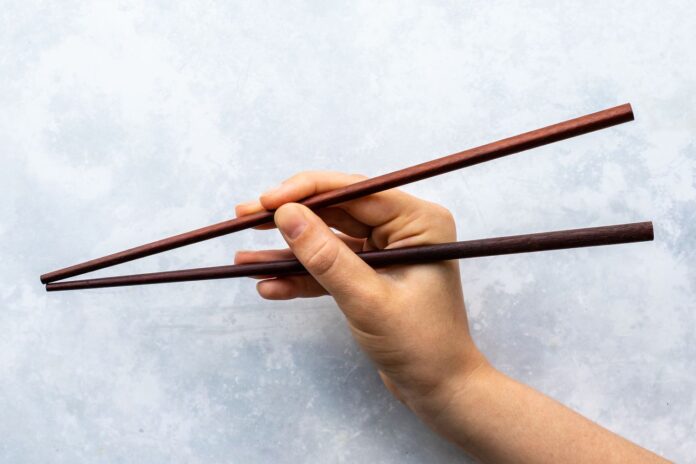Learning how to hold chopsticks is an essential skill for anyone interested in exploring the rich culinary traditions of East Asia. These slender utensils, known for their elegant simplicity, offer a unique and enjoyable dining experience.
While chopsticks may appear deceptively straightforward, achieving the right grip requires practice and precision. In this article, we will delve into the art of holding chopsticks, unraveling the fundamental techniques and tips that will help you become adept at using these versatile utensils with ease and grace.
Whether you are a novice or simply seeking to refine your chopstick skills, join us on this journey as we unravel the secrets behind the perfect chopstick grip.
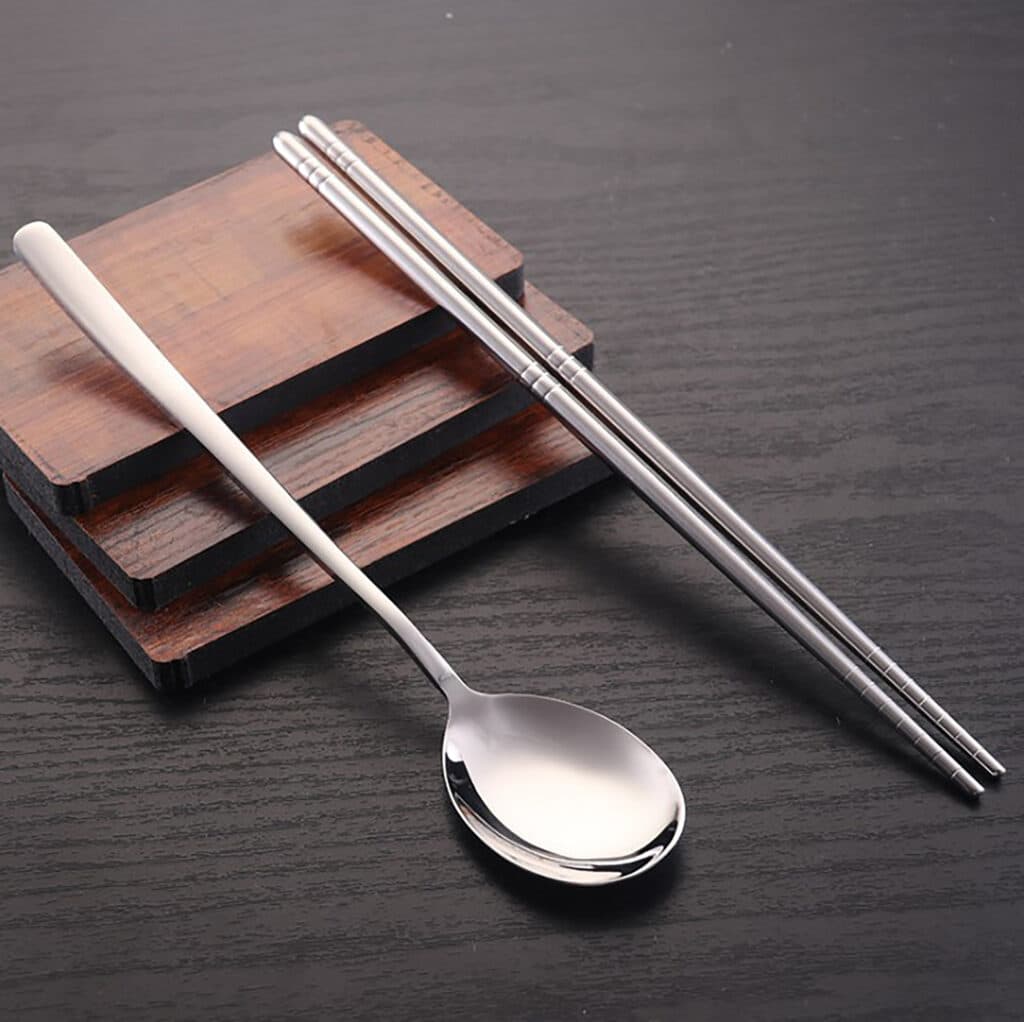
SEE ALSO:
- How to make Sushi Burrito: Homemade Sushi Recipe
- Best Homemade German Chocolate Cake Recipe
- How Many Cups in a Pint (Easy Conversion Charts)
How to hold Chopsticks
If you’re aiming for perfection, the proper way to use chopsticks is to always have the sticks parallel to one another.
1. Place the bottom chopstick. Let the back end rest in the crevice between your thumb and index finger, and the front end rest on the bottom of your ring finger. Lay your thumb over the chopstick.
2. Place the top chopstick. Keeping your thumb straight, hold the top chopstick like a pen and place it in the space between the top knuckle of your middle finger and the tip of your index finger.
3. Keep the bottom chopstick fixed at all times while only moving the top chopstick. To move the bottom chopstick, bend your middle and index fingers (while not bending your thumb).
Adjust the placement of the chopstick accordingly so that it feels comfortable; you should be grasping onto the top third of the chopstick, not the middle.
Practice often. And if this is not the most comfortable way for you to hold a chopstick, then switch it up until you can quickly and comfortably pick up pieces of food without dropping them.
After you get the hang of it, the chopsticks can be used to eat anything. Pick up veggies and proteins; some more advanced users of the chopstick can even pick up individual grains of rice. Chopsticks are especially great for gripping long, slippery noodles.
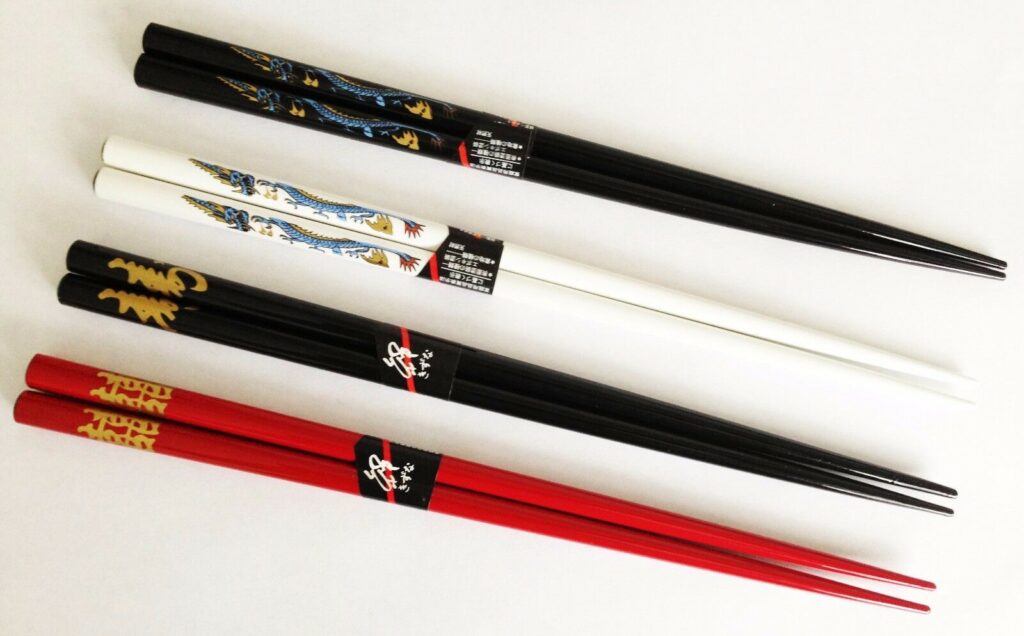
Related: Best Spaghetti Bolognese Recipes you should try (Quick and Easy)
How to hold Chopsticks to eat
Using Chopsticks to Eat
The First Chopstick
- Place the first chopstick where your index finger and thumb connect. Rest the thicker end of the chopstick on the web between your fingers, nesting it in the crook. Support the chopstick with the end of your ring finger. This is your “anchor” chopstick and won’t move when you pick up food.
- If it’s more comfortable, support the chopstick with your middle finger rather than your ring finger. Remember, there are many ways to hold chopsticks; no single way is the “right” way.
- Start by using wooden or bamboo chopsticks since the material is easier to grip than plastic or metal chopsticks.
The Second Chopstick
- Grip the second chopstick with your middle, index finger, and thumb. Hold the second chopstick in much the same way you hold a pencil. Rest your thumb on the side of the chopstick, your index finger on the top, and your middle finger on the back. This second, or top chopstick, is the stick that moves.
- Use your other hand to make sure the chopsticks are level with each other, or tap them down on the table to even them out, which makes them easier to use and prevents accidental crossing when picking something up.
- If you are having trouble holding both chopsticks at the same time, train with a set of connected starter chopsticks to help you get situated.
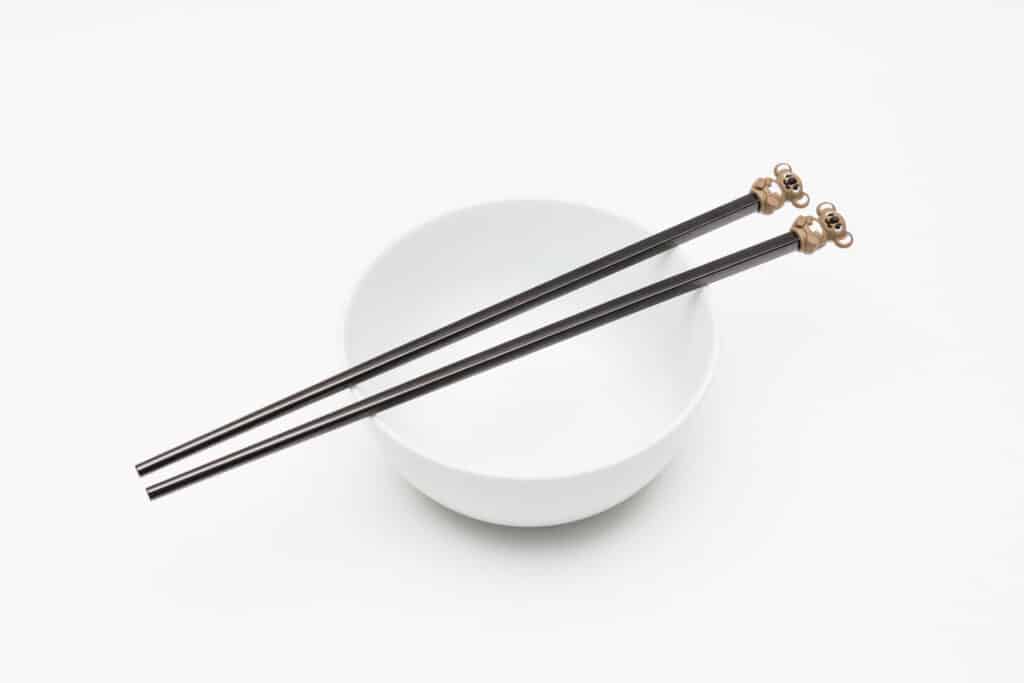
Chopstick Movement
- Move the top chopstick up and down with your index and middle fingers. Use your index finger to “pinch” the chopstick and your middle finger to “push” it back open. Practice opening and closing the chopsticks like this until you get a feel. As you do, try to keep your thumb stationary—it’s just there for support, not movement.
- If it helps, move your hand up and down the chopstick, experimenting with levels of grip. Some find it easier to manoeuvre closer to the base, others further up.
- Practice your moves by repeatedly touching both tips of the chopsticks together. This helps improve your accuracy and gives you a feel for the motion.
Using the Chopstick
- Pick up food at a 45° angle. There’s no “correct” angle, but going at your food with your chopsticks close to parallel with the table helps grip your food and transport it safely to your plate or your mouth. Go ahead and pinch that tasty bite securely but gently. Once you have it steady, lift it up. If it feels unstable, put it down and try again.
- If you’re nervous about dropping your food, transport it with your free hand cupped beneath it. It’s better to catch it in your hand in case of a fall than drop it to the floor.
- Practice picking up individual peanuts or popped popcorn kernels to improve your dexterity.
Related: How Long Is Chicken Good for in the Fridge? A Comprehensive Guide
How to hold chopsticks to eat Noodles
These are step-by-step guides to eating noodles with a chopstick
Pick one of the chopsticks and place it at the connecting point of your index finger and your thumb so that the narrower side is closer to the inner side of your thumb while the wider side is closer to your palm.
Place the second chopstick on your index finger and thumb, with your thumb touching the pointed end of the chopstick. Put the middle finger, or index finger, of your right hand behind the second chopstick so that the top rests against the tip of your finger.
Try to move the chopsticks up and down with your hand to test if you properly placed the two chopsticks. Make sure the bottom of the stick does not cross, as it will hinder you from smooth eating.
Use your chopsticks to pick up noodles in an attempt to pick up a bowl of noodles. Keep the bowl of noodles balanced while avoiding an assortment of obstacles. You can stretch or shrink your chopsticks to grab the noodles bowl. Practice makes perfect, but most importantly, it is a heck of a lot of fun.
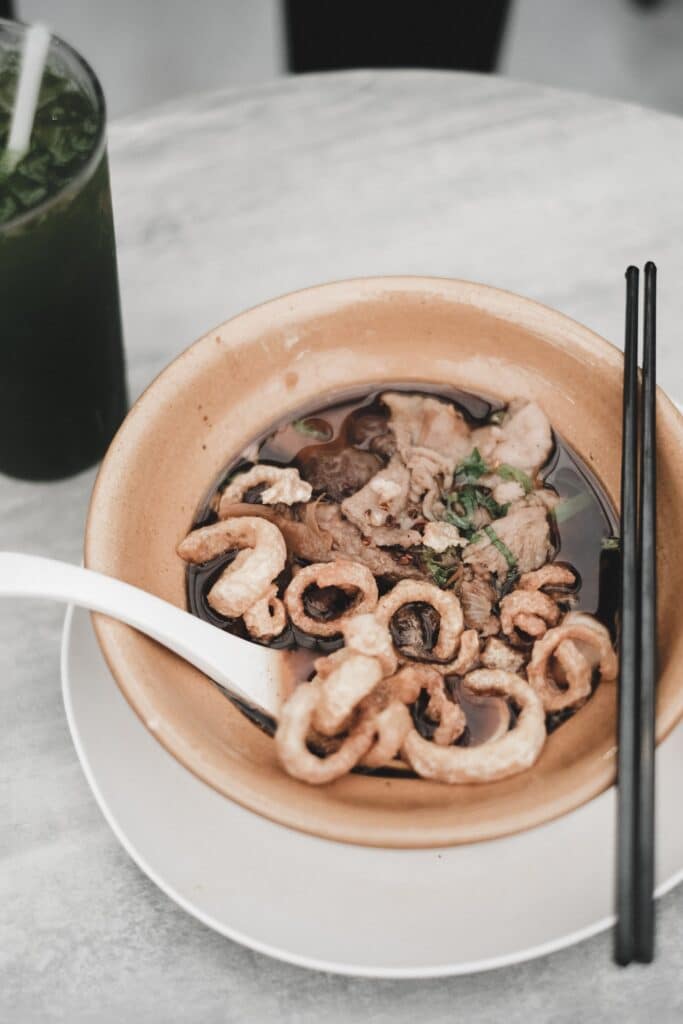
Related: How to Boil Corn on the Cob
Chopsticks Etiquette
- Pick up shared food with the thicker end of your chopsticks. Often at Asian dining tables (whether at home or at a restaurant), plates of food are shared among the diners. But don’t just dive in with the ends of the chopsticks that you’ve already put in your mouth. Turn them around, pick up communal food with unused ends, and place the food on your plate. Then turn your chopsticks around again and eat as usual.
- Or, use a public pair of serving chopsticks. These are usually found near their respective plates. Unlike a fork or a spoon, avoid inserting more than the ends past your lips, and definitely don’t lick food off of them.
- Place your chopsticks on a chopstick and rest when not eating. Lay your chopsticks horizontally in front of your plate or bowl to avoid pointing them at other diners. Avoid placing them directly on the table, which might get the table a bit messy. If there’s no chopstick rest, place your chopsticks across the ridges of your plate or bowl, or rest them on a napkin or a wrapper.
Related: Best Belgian Waffles Recipes You Should Try Out
Common Chopstick Courtesies on How to Hold Chopstick
- When opening or separating new chopsticks, do so under the table and parallel to the floor.
- Avoid spearing your food with the ends of your chopsticks. Getting a grip on that slippery bit of fish might be tempting, but it’s generally seen as impolite.
- Avoid pointing at people with your chopsticks. You wouldn’t jab your fork or knife at someone.
- Avoid passing food from chopstick to chopstick and other social taboos.
- Transferring food between chopsticks resembles a certain Japanese funeral ritual, and so it’s generally not a welcome sight at the dinner table. In addition, avoid crossing your chopsticks into the shape of an “X” when you set them down, which is a common signifier of death.
- Do not leave your chopsticks upright in bowls of rice or other food since this resembles upright incense and recalls sombre funeral settings.
Related: 21 Kerala Famous Food
What Type Of Chopsticks To Use
- Wood or bamboo tends to be the easiest materials for beginners; these chopsticks are easier to grip.
- Lacquered chopsticks are also great and tend to last a lot longer than wood.
- There are also stainless steel chopsticks, which are more typical of Korean cuisine but can be slippery and difficult to use if you are not yet fluent in chopstick wielding.
At the end of the day, despite what people may say, there is not just one right way to hold a chopstick. As one of the most used utensils in the world, there is a lot of room for flexibility. You just need a bit of practice.
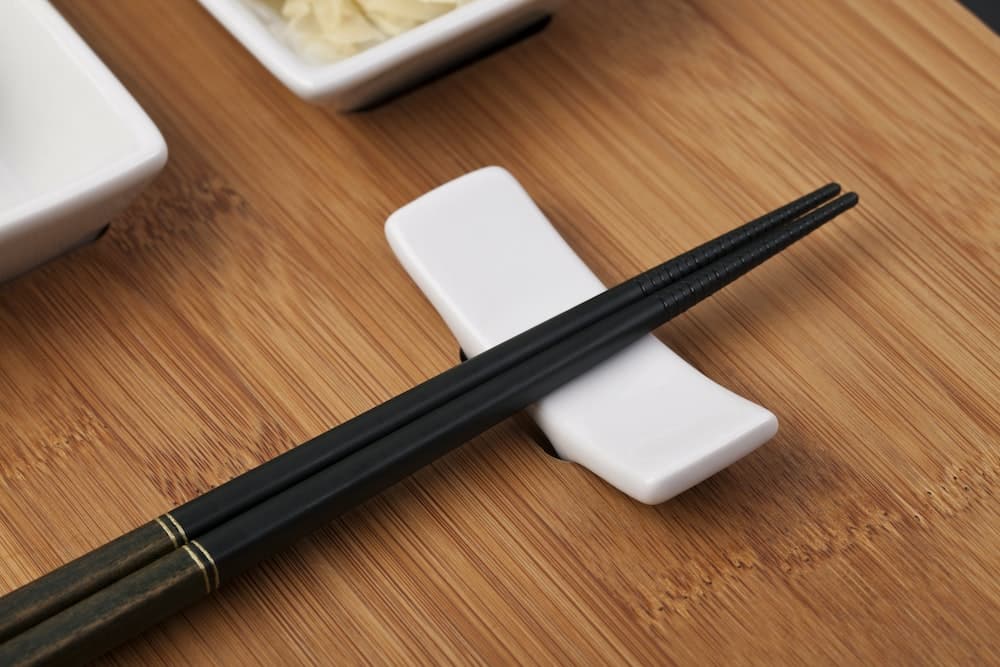
Related: 25+ Modern Chocolate Cake Designs With Images in 2023
Conclusion
Mastering the art of holding chopsticks is not just about practicality; it is a gateway to a deeper understanding and appreciation of East Asian culinary traditions.
Throughout this article, we have explored the fundamental techniques and tips for achieving a proper chopstick grip. Remember, it is a journey that requires patience, persistence, and practice.
By developing your chopstick skills, you open up a world of possibilities, allowing you to effortlessly navigate a variety of dishes, from delicate sushi rolls and ramen to flavorful stir-fries.
Moreover, understanding the cultural significance of chopsticks and observing the associated etiquette fosters a sense of respect and admiration for the traditions and customs of the regions where they are used.
So, embrace the versatility of chopsticks and embark on this culinary adventure with confidence. As you refine your grip and dexterity, you will enhance your dining experience and deepen your cultural connection. So, pick up your chopsticks, savour the flavours, and immerse yourself in the rich tapestry of East Asian cuisine.



